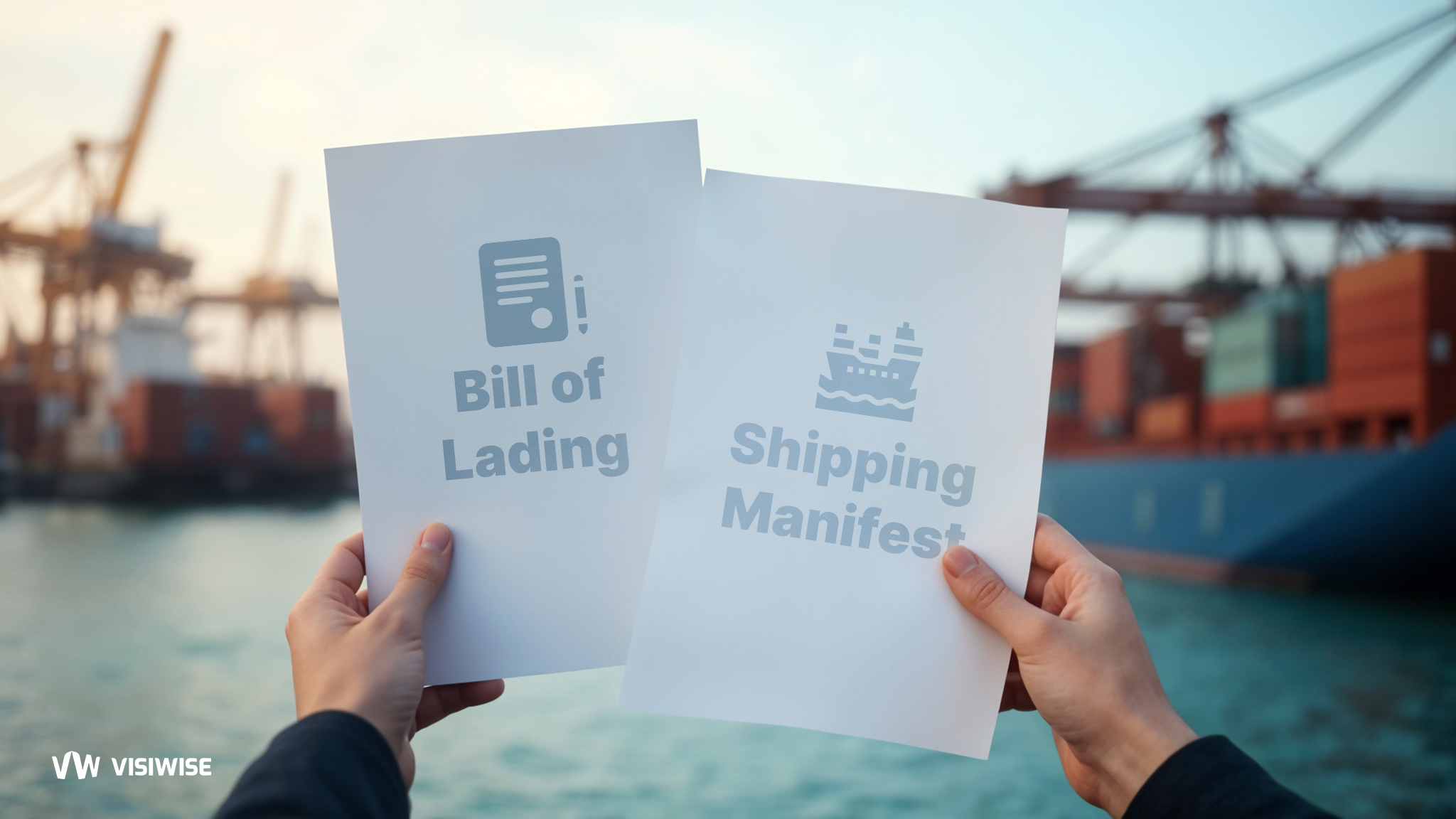The shipping manifest and the bill of lading are two essential documents in international trade, often used interchangeably by those unfamiliar with their distinct roles. However, these documents serve different purposes and are vital for ensuring the smooth movement of goods through the supply chain. Understanding their differences can enhance compliance, minimize errors, and optimize logistics management.
1. Definition and Purpose
- Shipping Manifest:
A shipping manifest is a comprehensive document listing all the details of the cargo being transported on a vessel or vehicle. It provides a summary of the goods onboard, typically including details like the quantity, description, weight, and origin of each item. The manifest serves as a consolidated report of all the goods carried, mainly for regulatory, customs, and internal tracking purposes. - Bill of Lading (B/L):
The bill of lading is a legally binding contract between the shipper and the carrier, specifying the terms of the transportation. It acts as a receipt for the cargo being shipped, a document of title, and evidence of the contract of carriage. The bill of lading not only lists the goods but also outlines the delivery terms, payment obligations, and parties involved in the shipment.
2. Legal Implications
- Shipping Manifest:
The shipping manifest is primarily an informational document. Its primary purpose is to provide customs authorities and internal logistics teams with an overview of the cargo. While it supports regulatory compliance, it does not hold the same legal authority as the bill of lading. Mistakes or discrepancies in the shipping manifest might cause delays, but they do not carry the same legal consequences. - Bill of Lading:
The bill of lading, on the other hand, has significant legal implications. It serves as a document of title, meaning that whoever possesses the original B/L has the right to claim ownership of the goods upon delivery. Discrepancies in the bill of lading can lead to legal disputes, financial penalties, and even the seizure of goods. This document is critical in determining liability and is often used in court cases to resolve disputes between shippers, carriers, and receivers.
3. Role in the Supply Chain
- Shipping Manifest:
The shipping manifest is mainly used for operational and customs purposes. It allows the carrier and port authorities to confirm that all goods are accounted for before loading and unloading. Customs officials use the manifest to assess duties, taxes, and other regulatory requirements, ensuring compliance with national and international laws
- Bill of Lading:
The bill of lading is integral to the financial and legal processes in the supply chain. It is required for the release of goods at the destination and serves as proof that the goods were shipped as agreed. It is also commonly used in documentary credit transactions, where banks require a copy of the bill of lading to release payment for the shipment.
4. Information Included
- Shipping Manifest:
The shipping manifest contains general details about all cargo on the vessel. It typically includes:- Names of the shipper and consignee
- Description and quantity of goods
- Cargo weight and volume
- Port of origin and destination
- Container numbers and seals
It does not, however, include detailed legal terms related to the shipment.
- Bill of Lading:
The bill of lading includes more specific information and legal terms, such as:- Shipper and consignee details
- Detailed description of the goods (including marks, numbers, and nature)
- Terms and conditions of carriage
- Payment terms (freight prepaid or collect)
- Date of shipment
- Delivery instructions and consignee’s signature upon receipt
5. When They Are Issued
- Shipping Manifest:
A shipping manifest is typically generated once the shipper provides all relevant cargo details to the carrier. It is prepared before the vessel’s departure and is used throughout the journey to ensure the cargo is tracked and accounted for. - Bill of Lading:
A bill of lading is issued after the goods are loaded onto the vessel (or sometimes upon receipt at the carrier’s terminal). It is signed by the carrier or their agent as a confirmation that the goods have been received in good order. The document is often provided to the shipper immediately after loading, but it can be issued earlier if the goods are delivered to the carrier’s custody.
Detailed Comparison of Shipping Manifest vs. Bill of Lading
| Aspect | Shipping Manifest | Bill of Lading |
| Legal Authority | Informational document | Legally binding contract and document of title |
| Primary Purpose | Summary of cargo for customs and tracking | Evidence of contract, receipt, and title transfer |
| Issued When | Before shipment | After loading (or upon receipt by the carrier) |
| Used By | Customs, carriers, port authorities | Shippers, carriers, banks, consignees |
| Information | General cargo details (description, weight) | Detailed cargo info + legal and payment terms |
What types of shipping manifests are there?
There are several types of shipping manifests, each serving a specific function depending on the nature of the cargo and the mode of transportation:
Cargo/Freight Manifest
A cargo or freight manifest provides detailed information about the cargo onboard, including shipping routes. It contains additional data such as the names of the consignor and consignee, the document number (often the Bill of Lading), and a detailed description of the merchandise being shipped, including its type and quantity.
Import General Manifest (IGM)
The Import General Manifest is filed with the customs department of the importing country. It ensures that the products are legally permitted to enter the country and that any applicable taxes are paid. This manifest must be submitted within 24 hours of the vessel’s arrival at the port. Goods will not be unloaded from the ship until customs clearance is completed.
Container Manifest
Each container on a ship must have its own manifest. This document includes details about the contents of the container, the loading sequence, the port of origin, and the destination port.
Dangerous Cargo Manifest
For containers holding hazardous materials, a dangerous cargo manifest is required. This document lists detailed information about the dangerous goods and must be easily accessible to emergency personnel and law enforcement. In the United States, the regulations for dangerous cargo manifests are overseen by the Department of Homeland Security and the U.S. Coast Guard.
Out of Gauge (OOG) Manifest
An Out of Gauge manifest is reserved for items that are too large or heavy to fit inside a standard shipping container. It includes images indicating the center of gravity, details on lifting points, and specific instructions for loading and unloading the goods to prevent damage during transport.
Reefer Manifest
A reefer manifest is used for goods requiring refrigeration. It contains detailed information about the necessary temperature settings, humidity levels, and permissible temperature variance. If the reefer manifest is not strictly followed, the goods may spoil during transit.
Conclusion
While both the shipping manifest and bill of lading are crucial for managing international shipments, they play distinct roles within the supply chain. The shipping manifest is focused on providing a high-level overview of the cargo for regulatory and tracking purposes, while the bill of lading serves as a legally enforceable document that governs the relationship between the shipper and the carrier. Understanding the key differences between these documents can help businesses navigate the complexities of global trade more efficiently.



